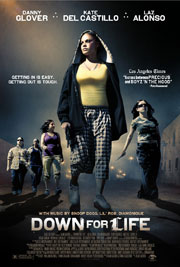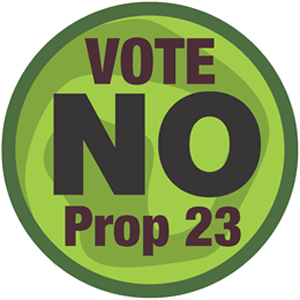This is the fourth of eight write-ups from freshman students at Manual Arts High School. Some participated in weeks-long projects about animal abuse, drugs, gangs, prostitution and racism. Part of their projects included surveys they created for their communities. After they gathered information, all of the groups presented their findings at a school presentation. Two days later, each group wrote about their experiences during an Intersections: The South Los Angeles Report mentoring and writing workshop.
We chose violence because we had overall topics that we wanted to talk about. We thought about animal abuse, domestic abuse and gang violence, and they all fell into the category of violence. This led us to our inquiry question, which was, “How can we stop violence in our community when we see violence within us and all around us?”
Our team conducted research by distributing surveys and giving interviews to multiple people. Facts that we got from the surveys are: many students think violence comes from school, and most students would like to stop violence, but they are too scared to try. Also, students do not see other ways to solve problems because most students see violence in themselves. Victims of violence include everyone from children to elders and from pets to farm animals. Men and women also experience verbal to sexual abuse, and the entire world is full of violence. Everyone is a victim. Violence is found in our homes, the media, video games, television shows, schools and movies.











 LAPD 77th St. Area Halloween Carnival Extravaganza
LAPD 77th St. Area Halloween Carnival Extravaganza Halloween Festival at the Rita D. Walters Learning Complex
Halloween Festival at the Rita D. Walters Learning Complex
 “If you’re gonna fight for something, it should be for something better than this.” Those are the words of Rascal – the 15-year-old leader of a Latina gang clique – explaining why she’s leaving her life of violence. Alan Jacobs’ film, “Down for Life,” follows the story of Rascal (played by newcomer and
“If you’re gonna fight for something, it should be for something better than this.” Those are the words of Rascal – the 15-year-old leader of a Latina gang clique – explaining why she’s leaving her life of violence. Alan Jacobs’ film, “Down for Life,” follows the story of Rascal (played by newcomer and  Advocates with an environmental justice organization in Huntington Park are stepping up their efforts to inform South East Los Angeles residents about Proposition 23 and its potential effects on greenhouse gas emissions on their communities.
Advocates with an environmental justice organization in Huntington Park are stepping up their efforts to inform South East Los Angeles residents about Proposition 23 and its potential effects on greenhouse gas emissions on their communities.





